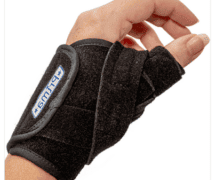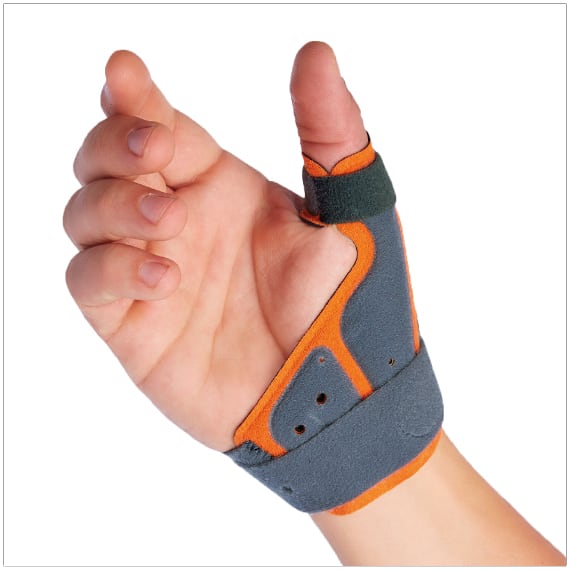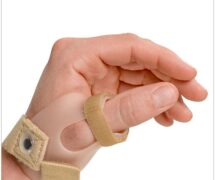Thumbs are awesome! So awesome in fact that most of the time we take them for granted. That is… until your thumb starts to hurt. When you have thumb joint pain, you realize just how much you use it. Pain in your thumb can be caused by several health conditions. If you find yourself saying, “my thumb hurts – what’s wrong”, you may have one of the 4 common causes of thumb pain – 1. CMC Thumb Arthritis, 2. de Quervain’s Tenosynovitis, 3. Gamekeeper’s or Skier’s Thumb, or 4. Trigger Thumb.
Where Does Your Thumb Hurt
Thumb joint problems can make every day activities challenging. To discover what’s causing your thumb pain it’s important to understand where on your thumb it hurts, when you feel the pain and how often you feel it. The following information can help you learn why your thumb hurts and give you answers on what to do about it.
Start by answering the question “Where Does It Hurt?“ in the charts below. Initial treatment generally begins with immobilizing your thumb with a splint or brace to help limit your motion and rest your joints and tendons. In most cases, it is best to treat the condition early, with simple measures. The earlier the treatment is started, the better the chances that your pain can be relieved. Don’t wait to feel better.
4 Common Causes of Thumb Pain
1. Thumb Pain from CMC Thumb Arthritis
Where Does It Hurt? |
You Might Have This |
Try This |
| At the base of the thumb where your thumb meets your wrist; you feel pain when pinching or gripping, especially holding small objects like pens or tool handles. You may experience loss of grip strength and thumb mobility. | CMC Thumb Arthritis (Also known as CMC Joint Arthritis, or Basal Joint Arthritis) occurs when the cartilage wears out, causing the bones in the CMC joint to grind together. CMC arthritis can be mild or it can progress over time and is one of the most common causes of thumb pain |
CMCcare Thumb Brace
|
2. Thumb Pain from de Quervain’s
Where Does It Hurt? |
You Might Have This |
Try This |
| Along the side of your thumb when moving it into the hitchhiker position or when bending your hand towards your little finger; pain may “shoot” along the thumb side of your forearm. | de Quervain’s Tenosynovitis (also known as Mommy’s thumb) is inflammation of the tendons at the base of your thumb, on the side of your wrist. The most common cause is from overuse – repetitive motions such as lifting or side-to-side movements with your hand. | 
3pp Ez FIT Thumb Spica Splint |
3. Thumb Pain from Gamekeeper’s Thumb
Where Does It Hurt? |
You Might Have This? |
Try This |
| Pain in the middle joint of your thumb where it attaches to your hand; you have difficulty grasping or holding objects; pinching is painful and hard to do. | Gamekeeper’s or Skier’s Thumb occurs when the ligament in the thumb is torn due to sideways force away from the index finger. This injury often results from falling and catching the thumb or strong twisting motions. |
ThumSaver MP |
4. Thumb Pain from Trigger Thumb
Where Does It Hurt? |
You Might Have This? |
Try This |
| You feel a “popping” pain when bending or straightening the end of your thumb; your thumb sticks in a bent position and has to be pulled straight | Trigger Thumb is inflammation of the tendon(s) that flex or bend your thumb. The tendons in your thumb get too large to move back and forth through the “pulleys” causing your thumb to get stuck | 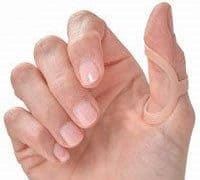 Oval-8 Finger Splint for Trigger Thumb Oval-8 Finger Splint for Trigger Thumb |
While this information can be useful to help narrow down what your thumb problem might be, it is strongly recommended that you consult with a health care professional before beginning any treatment. Treating your symptoms with the wrong diagnosis can not only delay proper healing, it may also make your condition worse.
Like what you’ve read? Click here to subscribe to the blog!
Looking for Thumb Braces to Help Relieve Thumb Pain?
Click on the image below
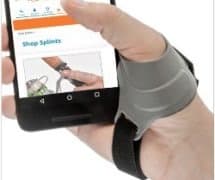
Learn More on How to Relieve Your Thumb Pain? Download Our Guide
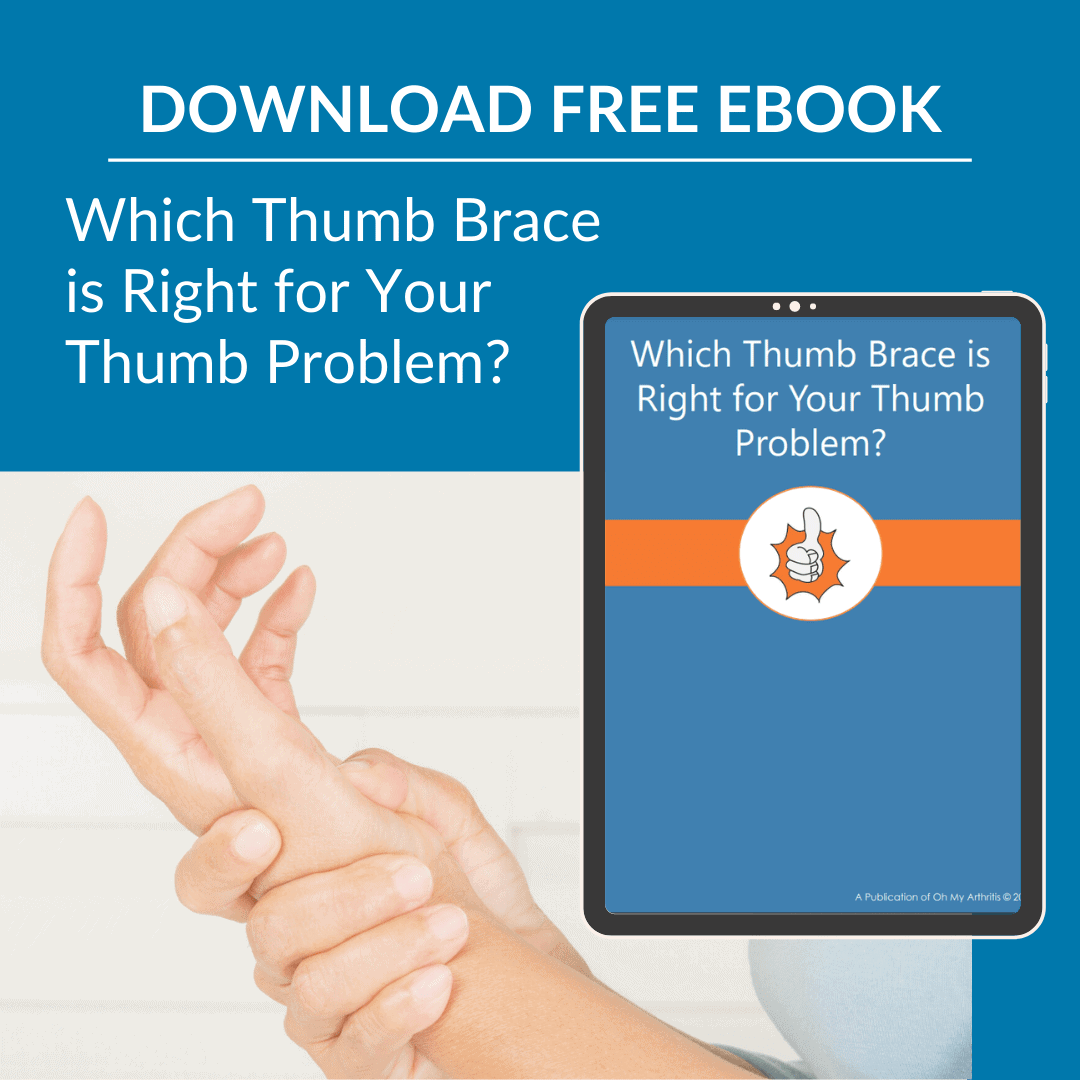
Our blogs are educational in nature and are not intended as a substitute for medical advice. Because your condition is unique to you, it is recommended that you consult with your health care provider before attempting any medical or therapeutic treatments. We are always happy to answer questions about products mentioned in our blogs, however, we cannot provide a diagnosis or medical advice.



